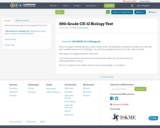
10th grade biology aligned to the standards that is free.
- Subject:
- Life Science
- Material Type:
- Full Course
- Author:
- John Kinney
- Date Added:
- 05/13/2015


10th grade biology aligned to the standards that is free.
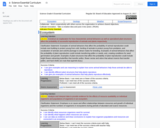
6th Grade Regular Science Scope & Sequence

In this course, you will learn the principles of genetics with application to the study of biological function at the level of molecules, cells, and multicellular organisms, including humans. We will cover structure and function of genes, chromosomes, and genomes; biological variation resulting from recombination, mutation, and selection; population genetics; and the use of genetic methods to modify genes and genomes and analyze protein function, gene regulation, and inherited disease.
This course, based on the MIT course 7.03 Genetics taken by enrolled MIT students, was organized as a three-part series on edX by MIT’s Department of Biology (Note: The third part of the course is not available yet). It is self-paced and free as long as you enroll in the Audit Track option, which you can select after creating a free account on edX.

In this course, you will engage in the biology of cells of higher organisms. You will study the structure, function, and biosynthesis of cellular membranes and organelles; cell growth and oncogenic transformation; transport, receptors, and cell signaling; the cytoskeleton, the extracellular matrix, and cell movements; cell division and cell cycle; functions of specialized cell types. This course emphasizes the current molecular knowledge of cell biological processes as well as the genetic, biochemical, and other experimental approaches that resulted in these discoveries.
This course, based on the MIT course 7.06 Cell Biology taken by enrolled MIT students, was organized as a three-part series on edX by MIT’s Department of Biology. It is self-paced and free as long as you enroll in the Audit Track option, which you can select after creating a free account on edX.

This course is an in-depth adventure through the molecular mechanisms that control the maintenance, expression, and evolution of prokaryotic and eukaryotic genomes. Through lectures and readings of relevant literature, students will explore gene regulation, DNA replication, genetic recombination, transcription, and mRNA translation. The quizzes are designed to build students' experimental design and data analysis skills.
This course, based on the MIT course 7.28/7.58 Molecular Biology taken by enrolled MIT students, was organized as a three-part series on edX by MIT’s Department of Biology. It is self-paced and free as long as you enroll in the Audit Track option, which you can select after creating a free account on edX.
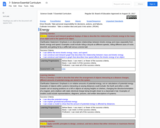
7th Grade Regular Science Scope & Sequence
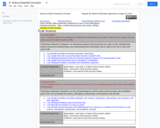
8th Grade Regular Science Scope & Sequence
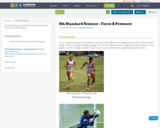
8th Standard
Science Textbook Lesson
Chapter 11
Force & Pressure
NCERT Syllabus

This training course is an introduction to the use of the AFNI software suites for the analysis of functional MRI (fMRI) data. It is not intended as an introduction to how fMRI works but is aimed at people who are already doing fMRI data analysis, or those who will be in the near future.
AFNI (Analysis of Functional NeuroImages) is a leading software suite of C, Python, and R programs and shell scripts, primarily developed for the analysis and display of anatomical and fMRI data. It is freely available for research purposes.
This event was organized by the Center for Brains, Minds, and Machines (CBMM) Trainee Leadership Council.
CBMM is a multi-institutional NSF Science and Technology Center headquartered at MIT that is dedicated to developing a computationally based understanding of human intelligence and establishing an engineering practice based on that understanding. CBMM brings together computer scientists, cognitive scientists, and neuroscientists to create a new field—the science and engineering of intelligence.

Introduction to the linguistic study of language pathology, concentrating on experimental approaches and theoretical explanations. Discussion of Specific Language Impairment, autism, Down syndrome, Williams syndrome, normal aging, Parkinson's disease, Alzheimer's disease, hemispherectomy and aphasia. Focuses on the comparison of linguistic abilities among these syndromes, while drawing clear comparisons with first and second language acquisition. Topics include the lexicon, morphology, syntax, semantics and pragmatics. Relates the lost linguistic abilities in these syndromes to properties of the brain.

The Acoustics of Speech and Hearing is an H-Level graduate course that reviews the physical processes involved in the production, propagation and reception of human speech. Particular attention is paid to how the acoustics and mechanics of the speech and auditory system define what sounds we are capable of producing and what sounds we can sense. Areas of discussion include:
the acoustic cues used in determining the direction of a sound source,
the acoustic and mechanical mechanisms involved in speech production and
the acoustic and mechanical mechanism used to transduce and analyze sounds in the ear.

An alternative introduction to the chapter "Adapting and Living Together" - explained with Vamipres! It sits within the Ecology and Environment topic of the virtual school GCSE Biology. Teachers can choose which engagement video is better for their own uses and students.
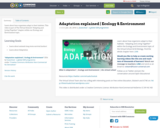
Learn about how organisms adapt to their habitats. This video is part of The Virtual School's "Adapting and Living Together" chapter within our Ecology and Environment topic.
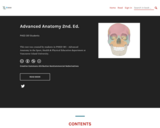
Short Description:
This text was created by students in PHED 301 - Advanced Anatomy in the Sport, Health & Physical Education department at Vancouver Island University.
Word Count: 115766
(Note: This resource's metadata has been created automatically by reformatting and/or combining the information that the author initially provided as part of a bulk import process.)

The course includes survey and special topics designed for graduate students in the brain and cognitive sciences. It emphasizes ethological studies of natural behavior patterns and their analysis in laboratory work, with contributions from field biology (mammology, primatology), sociobiology, and comparative psychology. It stresses mammalian behavior but also includes major contributions from studies of other vertebrates and of invertebrates. It covers some applications of animal-behavior knowledge to neuropsychology and behavioral pharmacology.

This course is a graduate introduction to natural language processing - the study of human language from a computational perspective. It covers syntactic, semantic and discourse processing models, emphasizing machine learning or corpus-based methods and algorithms. It also covers applications of these methods and models in syntactic parsing, information extraction, statistical machine translation, dialogue systems, and summarization. The subject qualifies as an Artificial Intelligence and Applications concentration subject.

Study of the most common advanced optimisation models in engineering problems, both Industrial and Telecommunication.

12.491 is a seminar focusing on problems of current interest in geology and geochemistry. For Fall 2005, the topic is organic geochemistry. Lectures and readings cover recent research in the development and properties of organic matter.

This course introduces students to a quantitative approach to studying the problems of physiological adaptation in altered environments, especially microgravity and partial gravity environments. The course curriculum starts with an Introduction and Selected Topics, which provides background information on the physiological problems associated with human space flight, as well as reviewing terminology and key engineering concepts. Then curriculum modules on Bone Mechanics, Muscle Mechanics, Musculoskeletal Dynamics and Control, and the Cardiovascular System are presented. These modules start out with qualitative and biological information regarding the system and its adaptation, and progresses to a quantitative endpoint in which engineering methods are used to analyze specific problems and countermeasures. Additional course curriculum focuses on interdisciplinary topics, suggestions include extravehicular activity and life support. The final module consists of student term project work.

This course studies the relations of affect to cognition and behavior, feeling to thinking and acting, and values to beliefs and practices. These connections will be considered at the psychological level of organization and in terms of their neurobiological and sociocultural counterparts.

This course instructs students on how to develop technologies that help people measure and communicate emotion, that respectfully read and that intelligently respond to emotion, and have internal mechanisms inspired by the useful roles emotions play.

This course is an investigation of affective priming and creation of rigorously counterbalanced, fully computerized testing paradigm. Includes background readings, study design, counterbalancing, study execution, data analysis, presentation of poster, and final paper.

This course is offered to undergraduates and addresses several algorithmic challenges in computational biology. The principles of algorithmic design for biological datasets are studied and existing algorithms analyzed for application to real datasets. Topics covered include: biological sequence analysis, gene identification, regulatory motif discovery, genome assembly, genome duplication and rearrangements, evolutionary theory, clustering algorithms, and scale-free networks.
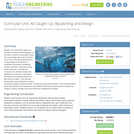
Bycatch, the unintended capture of animals in commercial fishing gear, is a hot topic in marine conservation today. The surprisingly high level of bycatch about 25% of the entire global catch is responsible for the decline of hundreds of thousands of dolphins, whales, porpoises, seabirds and sea turtles each year. Through this curricular unit, students analyze the significance of bycatch in the global ecosystem and propose solutions to help reduce bycatch. They become familiar with current attempts to reduce the fishing mortality of these animals. Through the associated activities, the challenges faced today are reinforced and students are stimulated to brainstorm about possible engineering designs or policy changes that could reduce the magnitude of bycatch.

This class analyzes complex biological processes from the molecular, cellular, extracellular, and organ levels of hierarchy. Emphasis is placed on the basic biochemical and biophysical principles that govern these processes. Examples of processes to be studied include chemotaxis, the fixation of nitrogen into organic biological molecules, growth factor and hormone mediated signaling cascades, and signaling cascades leading to cell death in response to DNA damage. In each case, the availability of a resource, or the presence of a stimulus, results in some biochemical pathways being turned on while others are turned off. The course examines the dynamic aspects of these processes and details how biochemical mechanistic themes impinge on molecular/cellular/tissue/organ-level functions. Chemical and quantitative views of the interplay of multiple pathways as biological networks are emphasized. Student work culminates in the preparation of a unique grant application in an area of biological networks.

This course focuses on computational and experimental analysis of biological systems across a hierarchy of scales, including genetic, molecular, cellular, and cell population levels. The two central themes of the course are modeling of complex dynamic systems and protein design and engineering. Topics include gene sequence analysis, molecular modeling, metabolic and gene regulation networks, signal transduction pathways and cell populations in tissues. Emphasis is placed on experimental methods, quantitative analysis, and computational modeling.

Short Description:
This book is adapted from Anatomy and Physiology by Openstax. The text is designed to supplement an Anatomical Basis of Injury in Athletic Training course while providing review of basic Anatomy and Physiology.
Word Count: 124069
(Note: This resource's metadata has been created automatically by reformatting and/or combining the information that the author initially provided as part of a bulk import process.)

Short Description:
This textbook is designed to actively engage your exploration and critical analysis of human anatomical variation in an Australian and New Zealand context. Understanding anatomical variation is essential for all health professionals to avoid patient misdiagnosis such as confusing a natural variant with a pathology, minimise surgical or procedural errors that may occur if variations are unexpected, and ultimately improve patient outcomes by applying culturally safe practices. Research in anatomical variation has demonstrated significant differences in phenotypic expression of variants between and within geographic, ancestral and socioeconomic populations, as well as displaying significant variance between males and females. It is therefore critical as a health professional to understand anatomical variation in the context of the population you intend to practice in. This textbook compiles this critical information into an easy to read summary of the range and frequency of anatomical phenotypes in Australian and New Zealand patients by drawing from contemporary anatomical science research. Anatomical variation of Aboriginal, Torres Strait Islander and Māori peoples has also been highlighted where research is available.
Long Description:
The anatomy of our outwardly facing physical appearance exhibits great diversity between individuals, from different eye, skin and hair colour to the size of our feet and our height. However, it is less known whether our anatomy differs beneath the surface… is the anatomy of the internal organs the same between individuals? Most textbooks would like you to think so with simplified standard descriptions of human anatomy such as the lung lobes and fissures, aortic arch branches and bone numbers. But this eBook is different. Here we build your understanding of the scope and clinical importance of human anatomical variation to improve your clinical skills as a health professional or biomedical scientist.
Anatomical variation is described as the differences in macroscopic morphology (shape and size), topography (location), developmental timing or frequency (number) of an anatomical structure between individuals. It presents during embryological or subadult development and results in no substantive observable interruption to physiological function. Every organ displays an array of anatomical phenotypes, and for these reasons the anatomy of each person is considered a variant. Understanding anatomical variation is essential for all health professionals to avoid patient misdiagnosis such as confusing a natural variant with a pathology, minimise surgical or procedural errors that may occur if variations are unexpected, and ultimately improve patient outcomes by applying culturally safe practices.
This textbook is designed to actively engage your exploration and critical analysis of human anatomical variation in an Australian and New Zealand context. Research in anatomical variation has demonstrated significant differences in phenotypic expression of variants between and within geographic, ancestral and socioeconomic populations, as well as displaying significant variance between males and females. It is therefore critical as a health professional to understand anatomical variation in the context of the population you intend to practice in. This textbook compiles this critical information into an easy to read summary of the range and frequency of anatomical phenotypes in Australian and New Zealand patients by drawing from contemporary anatomical science research. Anatomical variation of Aboriginal, Torres Strait Islander and Māori peoples has also been highlighted where research is available.
The textbook is organised to complement your health science studies by developing your depth of understanding to address three critical themes in anatomical variation: Theme 1: Categorise and describe a range of anatomical variation within the human body. Theme 2: Theorise the implications of anatomical variation on patient outcomes and in professional contexts. Theme 3: Investigate the process of anatomical variation formation and its potential causes.
Each chapter employs a multimodal and active learning approach using text and video summaries of key information, checkpoint quizzes, interactive images, clinical and professional discussion activities, and recommended readings. In this way, the activities in this textbook can be easily embedded into existing health science curricula to strengthen anatomical variation understanding in all health professional courses.
Word Count: 31978
ISBN: 978-1-925553-51-2
(Note: This resource's metadata has been created automatically by reformatting and/or combining the information that the author initially provided as part of a bulk import process.)

Short Description:
This textbook is designed to actively engage your exploration and critical analysis of human anatomical variation in an Australian and New Zealand context. Understanding anatomical variation is essential for all health professionals to avoid patient misdiagnosis such as confusing a natural variant with a pathology, minimise surgical or procedural errors that may occur if variations are unexpected, and ultimately improve patient outcomes by applying culturally safe practices. Research in anatomical variation has demonstrated significant differences in phenotypic expression of variants between and within geographic, ancestral and socioeconomic populations, as well as displaying significant variance between males and females. It is therefore critical as a health professional to understand anatomical variation in the context of the population you intend to practice in. This textbook compiles this critical information into an easy to read summary of the range and frequency of anatomical phenotypes in Australian and New Zealand patients by drawing from contemporary anatomical science research. Anatomical variation of Aboriginal, Torres Strait Islander and Māori peoples has also been highlighted where research is available.
Long Description:
The anatomy of our outwardly facing physical appearance exhibits great diversity between individuals, from different eye, skin and hair colour to the size of our feet and our height. However, it is less known whether our anatomy differs beneath the surface… is the anatomy of the internal organs the same between individuals? Most textbooks would like you to think so with simplified standard descriptions of human anatomy such as the lung lobes and fissures, aortic arch branches and bone numbers. But this eBook is different. Here we build your understanding of the scope and clinical importance of human anatomical variation to improve your clinical skills as a health professional or biomedical scientist.
Anatomical variation is described as the differences in macroscopic morphology (shape and size), topography (location), developmental timing or frequency (number) of an anatomical structure between individuals. It presents during embryological or subadult development and results in no substantive observable interruption to physiological function. Every organ displays an array of anatomical phenotypes, and for these reasons the anatomy of each person is considered a variant. Understanding anatomical variation is essential for all health professionals to avoid patient misdiagnosis such as confusing a natural variant with a pathology, minimise surgical or procedural errors that may occur if variations are unexpected, and ultimately improve patient outcomes by applying culturally safe practices.
This textbook is designed to actively engage your exploration and critical analysis of human anatomical variation in an Australian and New Zealand context. Research in anatomical variation has demonstrated significant differences in phenotypic expression of variants between and within geographic, ancestral and socioeconomic populations, as well as displaying significant variance between males and females. It is therefore critical as a health professional to understand anatomical variation in the context of the population you intend to practice in. This textbook compiles this critical information into an easy to read summary of the range and frequency of anatomical phenotypes in Australian and New Zealand patients by drawing from contemporary anatomical science research. Anatomical variation of Aboriginal, Torres Strait Islander and Māori peoples has also been highlighted where research is available.
The textbook is organised to complement your health science studies by developing your depth of understanding to address three critical themes in anatomical variation: Theme 1: Categorise and describe a range of anatomical variation within the human body. Theme 2: Theorise the implications of anatomical variation on patient outcomes and in professional contexts. Theme 3: Investigate the process of anatomical variation formation and its potential causes.
Each chapter employs a multimodal and active learning approach using text and video summaries of key information, checkpoint quizzes, interactive images, clinical and professional discussion activities, and recommended readings. In this way, the activities in this textbook can be easily embedded into existing health science curricula to strengthen anatomical variation understanding in all health professional courses.
Word Count: 31376
(Note: This resource's metadata has been created automatically by reformatting and/or combining the information that the author initially provided as part of a bulk import process.)
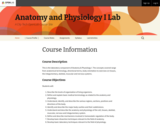
This is the laboratory component of Anatomy & Physiology I. The concepts covered range from anatomical terminology, directional terms, body orientation to exercises on tissues, the integumentary, skeletal, muscular and nervous systems.

The Anatomy Quizbook is an interactive learning book that will help students and tutors – indeed anyone interested in anatomy – learn, test and improve their knowledge of the human body.
Readers are presented with carefully selected questions and diagrams addressing core learning in clinically-relevant anatomy. This selective rather than exhaustive approach will especially suit time-poor scholars. Regular self-testing will also ensure a robust and strategic understanding of the subject matter.
In this first Volume, you can develop your knowledge of fundamental anatomy, including clinically-relevant terminology and the significant parts and operation of the:
- Thorax, focusing on the heart, lungs, and associated bones, muscles, nerves, blood and lymphatic vessels.
- Abdomen, exploring the stomach, intestines, pancreas, liver, gallbladder, kidneys, spleen and their supporting structures (muscles, nerves, blood and lymphatic vessels).
- Pelvis, examining the bones, ligaments, vessels and nerves of the pelvic region, the features of male and female pelves, and the major digestive and excretory organs (colon, rectum, bladder and urethra).
Whilst developed primarily for students who are studying, or intend to study, medicine, the Anatomy Quizbook will reward all readers who seek to explore and learn about the workings of the human body.
Regular users will find much to learn and build on, hopefully leading to further enthusiasm for a valuable subject that underpins much of medicine.

OpenStax
Short Description:
An adapted and revised edition of the OpenStax Anatomy & Physiology (https://openstax.org/details/books/anatomy-and-physiology) with revised content and artwork, Open Oregon State, Oregon State University. Data Dashboard
Long Description:
An adapted and revised edition of the OpenStax Anatomy & Physiology (https://openstax.org/details/books/anatomy-and-physiology) with revised content and artwork, Open Oregon State, Oregon State University.
Word Count: 551108
(Note: This resource's metadata has been created automatically by reformatting and/or combining the information that the author initially provided as part of a bulk import process.)

This is the open educational resource for BIO2311: Anatomy & Physiology I. This site provides all you will need for the course including a syllabus, link to the textbook, lecture notes, assignments, and all other related resources.
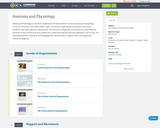
Anatomy and Physiology is a dynamic textbook for the two-semester human anatomy and physiology course for life science and allied health majors. The book is organized by body system and covers standard scope and sequence requirements. Its lucid text, strategically constructed art, career features, and links to external learning tools address the critical teaching and learning challenges in the course. The web-based version of Anatomy and Physiology also features links to surgical videos, histology, and interactive diagrams.

Anatomy and Physiology is a dynamic textbook for the two-semester human anatomy and physiology course for life science and allied health majors. The book is organized by body system and covers standard scope and sequence requirements. Its lucid text, strategically constructed art, career features, and links to external learning tools address the critical teaching and learning challenges in the course. The web-based version of Anatomy and Physiology also features links to surgical videos, histology, and interactive diagrams.
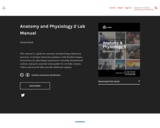
Short Description:
This manual is a guide for anatomy and physiology laboratory exercises. It includes dissection guidance with detailed images; instructions for physiology experiments including foundational content; and gross anatomy study guides for six body systems. Videos and tutorial links provide additional support.
Word Count: 12116
ISBN: 978-1-948027-09-0
(Note: This resource's metadata has been created automatically by reformatting and/or combining the information that the author initially provided as part of a bulk import process.)
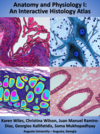
This Anatomy and Physiology I Histology Atlas helps students better understand the complex discipline of tissue histology with the use of interactive H5P activities. Students can reveal or hide illustration overlays drawn to help students visualize cell- and tissue-level structures.
This open access histology atlas was made possible through generous grant funding by The University System of Georgia through the Affordable Learning Georgia initiative: https://www.affordablelearninggeorgia.org/.
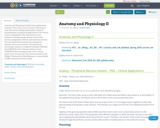
Anatomy and Physiology II syllabi and supplemental materials. This course covers a survey of the human body that stresses biological principles, chemical interpretations, and physical applications at the various levels of organization. The class lectures cover embryonic and physiologic theories of muscular, nervous, integument, skeletal, and endocrine systems. The class laboratories examine the integument, skeletal, and nervous systems. The department encourages students to complete Principles of Biology II/Lab (BIO102) and/or Chemical Science I/Lab (CHM110) before enrolling in this course. Course meets: 3 hrs. lecture; 3 hrs. lab. Course materials by Dr. Phillip T. Wong and Dr. Mark Beaumont, content added to OER Commons by Victoria Vidal.
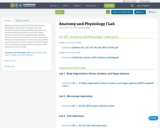
Syllabi and Lab Exercises for SCI 201: Anatomy and Physiology I. This course is designed to provide students with a basic understanding of the structure, function and disorders of the human body. Topics include an overview of the integumentary, skeletal, muscular, and nervous systems, as well as a discussion of tissues and special senses. A three-hour lab session is required each week. Course materials written by Maria Carles and Georgia Thoidis, content uploaded to OER Commons by Victoria Vidal.
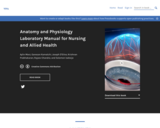
Word Count: 741633
(Note: This resource's metadata has been created automatically by reformatting and/or combining the information that the author initially provided as part of a bulk import process.)